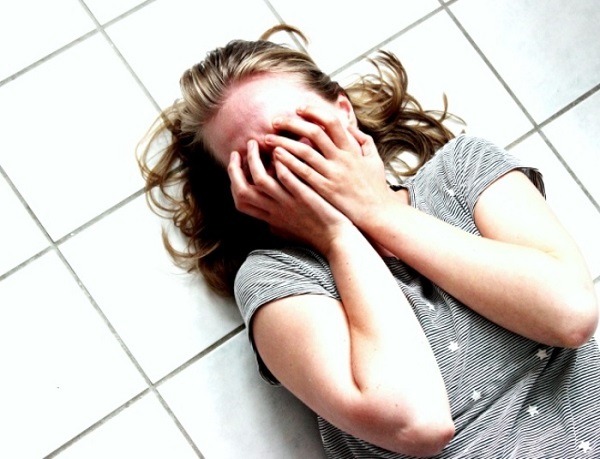
Dealing with 24 to 48 hours of excruciating pain? The constant desire to smash your head against a wall? Becoming a permanent fixture in a dark, silent room?
Yes, we’re talking migraines.
I’ve suffered from migraines since I was six years old. It was a downward spiral that began once I started school; I was a very sensitive child and overwhelmed easily. At the time, my migraine attacks occurred nearly once a week with sharp pain on one side of my forehead. It usually started with a headache and developed quickly into what felt like a metal fist pounding inside my head.
I had to say no to a lot of birthday parties, adventures, and school events. I was devastated every single time. Sometimes, people who hadn’t experienced such a high level pain before would tell me to “suck it up,” to “be a little tougher,” or to just “take a pill and it’ll be fine.” None of these things ever worked for me. Once an attack started, the only way out was just to endure it.
For years I asked myself one question over and over again: Why me?
Why do I have to suffer in a way that no one around me even understands? Why do I have to cancel birthday parties, school events, and going to the mall with friends? What did I do to deserve this grueling pain that leaves me crying on the bathroom floor?
After more than 10 years of suffering, I finally figured out why me. Understanding migraines was the key to healing mine. It wasn’t an easy journey, but now I am living proof that healing is possible. Today, I don’t suffer from migraines anymore. Whenever life overwhelms me, I am still prone to headaches, but it happens rarely and with less intensity.
Like a Thunderstorm: Understanding Migraine Attacks.
One could compare migraines to a thunderstorm. They usually happen unexpectedly, seemingly out of nowhere. They stay for a while, discharging loud thunder and electrified lightning. When the storm is over, the air is clear and free of tension—a fragile moment of quietness. We can’t stop the storm, just like we can’t stop a migraine attack.
“Migraines are meant to show us the right way to live our life. In a way, migraine patients are blessed with this disease. They’re most likely very sensitive human beings, unable to process too much emotion and stress at a time. By experiencing migraines, one is forced to live a life according to their individual needs.” ~ Dr. M.O. Bruker
According to Bruker, a German doctor and author, the real task for any migraine patient is to find out how to reduce overwhelm in order to prevent reoccurring migraine attacks.
After I understood the nature of my illness, it wasn’t my enemy anymore. I began working with it in a more mindful way—for the first time ever I saw a true possibility for healing.
System Shutdown: The Early Signs.
I started by using the analogy of a computer: If we open too many programs at a time, our computer will slow down significantly. If we then keep ignoring the signs and push further, the computer will at some point shut down. What appears to happen all of a sudden was in reality an ongoing process that could have been stopped by being aware of the early signs and slowing down.
That being said, for me, the early signs weren’t easy to catch. It might be a tension in my shoulders, the inability to concentrate, or general exhaustion. In order to determine our personal early signs, it is important to take small breaks throughout the day.
Practicing meditation, yoga, or other forms of relaxation can help us to cure the almost constant overwhelm that leads to migraines. Since migraines affect our whole body and mind, any solution to it must be holistic—including our ability to quiet our minds, release stress, and handle difficult emotions.
Other than implementing relaxation into my daily routine, these four steps helped me on my way to healing from migraines:
1. Befriending the pain. While this step is easier said than done, I’d say it’s the most crucial. For me, it took time. I had to start slowly, simply by loving the feeling when the attack was over. I felt weak and sensitive, yet alive. Thank you, migraine. Thank you for making me realize who I really am—that I’m allowed to be sensitive, that I can be a weak and a strong person at the same time.
2. Being responsible. Taking responsibility for this disease can be a struggle for those of us who suffer, but it’s important for the healing process. In fact, responsibility for our own life, our decisions, and possibly our sensitivity might be a sore subject and therefore a key topic to reflect on.
3. Changing perspectives. Whenever we overthink things or give in to extensive worries, we’re literally stuck in our own head and thus prone to headaches. Trying to get out of our heads, for example by imagining we’re stepping outside of our bodies or explaining our situation to a friend, can be vital. It offers a different angle on a challenging situation.
4. Being outside. Connecting with nature, feeling the grass beneath our feet, and letting the sun
touch our skin can all be soothing experiences for our mind that can also help our bodies. Some weather conditions, like fast-changing temperatures, can be part of the cause for an attack. Being in nature more frequently gives the body a chance to adapt and enhance its resilience.
The healing process for any disease is always an individual approach, just like the pain differs from person to person. There’s not one single cause for a disease as complex as migraines. That’s why this is not a step-by-step recipe, but rather food for thought and reflection on the topic. If we’re able to figure out our personal “why” and make changes to our lives according to that, the disease will more than likely leave us for good.
In hindsight, I feel grateful for the journey I went through, even if it meant enduring a lot of pain. We’re all in this together, especially in times of almost unbearable challenges. With an understanding for our illness, the possibility for healing is within our reach—if we’re ready to work on ourselves, it’s even closer.
~
~
Author: Svenja Dietz
Image: Author’s own via Caroline Dietz; Ariel Lustre/Unsplash
Editor: Nicole Cameron











Read 0 comments and reply